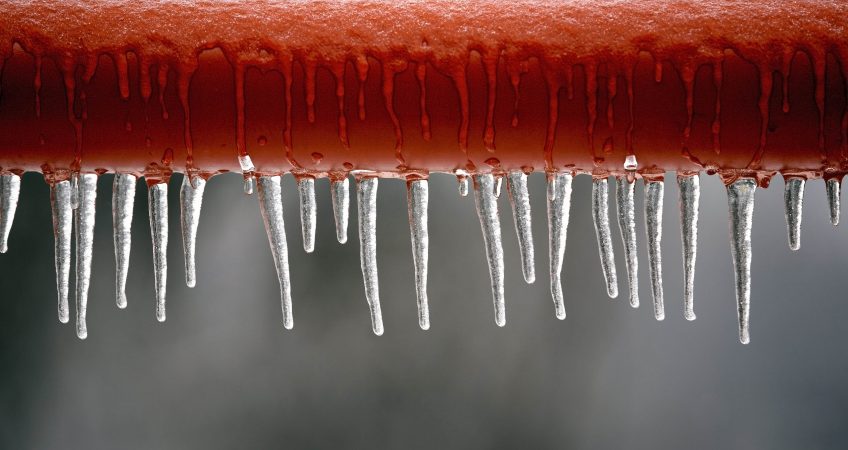Frozen pipes is a common problem during the winter months. While it’s customary for people to protect their water lines from freezing, many people forget to protect their sewer lines as well.
Here are a few tips from the American Red Cross to prevent your sewer lines from freezing, as well as a few tips for attempting to thaw them yourself.
Preventing Frozen Sewer Lines
- Consider installing specific products made to insulate pipes like installing UL-listed “heat tape,” “heat cable,” or similar materials on exposed sewer pipes. Newspaper can provide some degree of insulation and protection to exposed pipes – even ¼” of newspaper can provide significant protection in areas that usually do not have frequent or prolonged temperatures below freezing.
- Add insulation to attics, basements and crawl spaces. Insulation will maintain higher temperatures in these areas.
- Check around the home for areas where sewer lines are located in unheated areas. Look in the garage, and under kitchen and bathroom cabinets. All pipes in these areas should be insulated.
- Keep garage doors closed if there are water supply lines in the garage.
- Open kitchen and bathroom cabinet doors to allow warmer air to circulate around the plumbing.
- Keep the thermostat set to the same temperature both during the day and at night. By temporarily suspending the use of lower nighttime temperatures, you may incur a higher heating bill, but you can prevent a much more costly repair job if pipes freeze and burst.
- Consider relocating exposed pipes to provide increased protection from freezing.
Thawing Frozen Pipes
- If a toilet or drain is operating slowly, or not operating at all, then suspect a frozen pipe. Likely places for frozen pipes include against exterior walls or where your sewer line enters your home through the foundation.
- Apply heat to the section of pipe using an electric heating pad wrapped around the pipe, an electric hair dryer, a portable space heater (kept away from flammable materials), or by wrapping pipes with towels soaked in hot water. Do not use a blowtorch, kerosene or propane heater, charcoal stove, or other open flame device.
- Apply heat until full water pressure is restored. If you are unable to locate the frozen area, if the frozen area is not accessible, or if you cannot thaw the pipe, give us a call!
- Check all other drains, toilets etc. in your home to find out if you have additional frozen pipes. If one pipe freezes, others may freeze, too.
Following these tips and procedures can help you prevent frozen sewer lines and the subsequent costly repairs that accompany them. If you find that you cannot thaw your pipes yourself, or if you have any questions, then always feel free to contact our team at Advanced Septic Services at (717) 789 – 4548 or advancedsepticservicesinc@gmail.com! We are happy to help!

